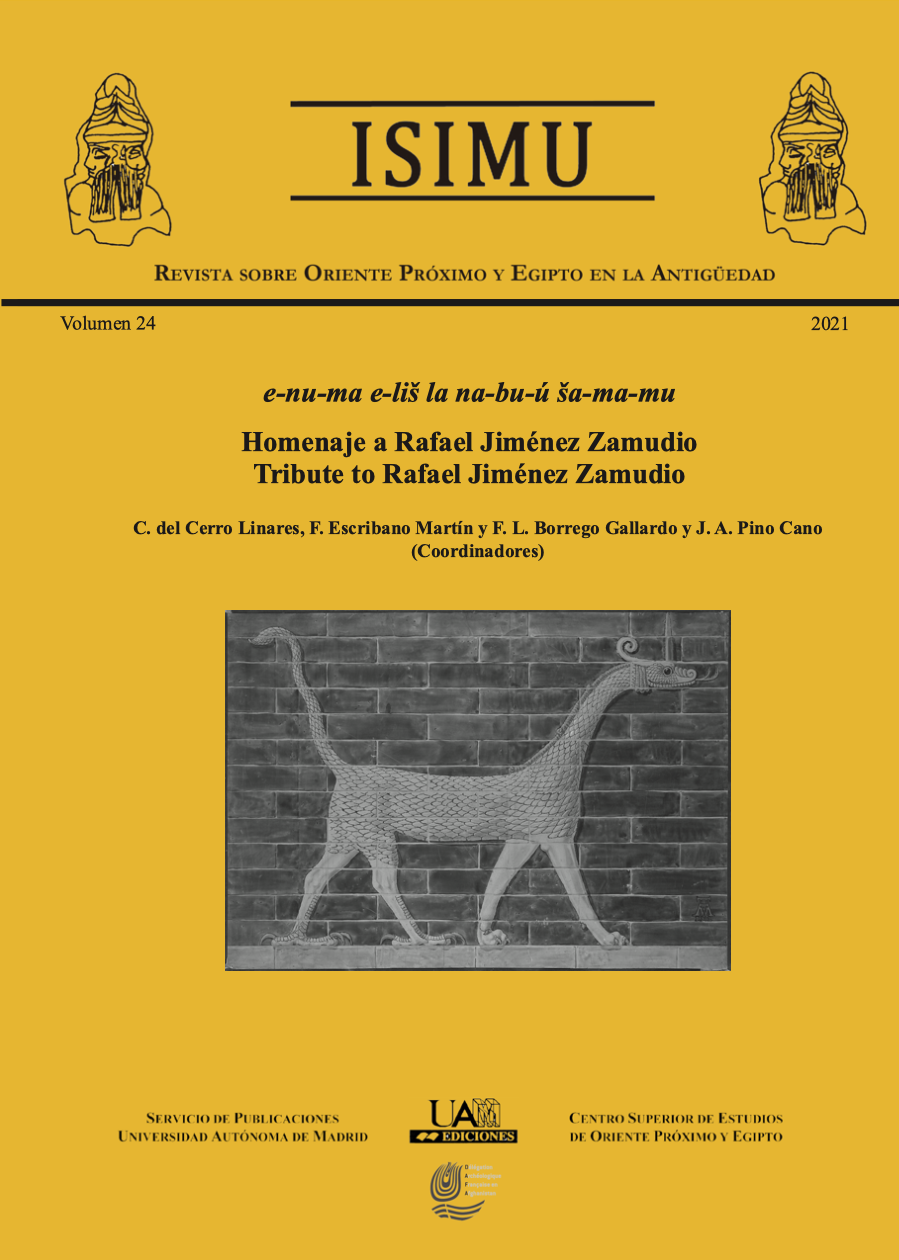
Keywords:
Babylon, Chaldeans, Nebuchadnezzar I, Nebuchadnezzar II, Enūma elish, akītuCopyright (c) 2022 Fernando Escribano Martín

This work is licensed under a Creative Commons Attribution-NonCommercial 4.0 International License.
Abstract
The study of Orientalism is advancing in Spain and we have always more and better tools in Spanish for its study, knowledge and dissemination. Not so long ago, in 2009, when defending my doctoral dissertation (Religious beliefs, festival and urban space in Chaldean Babylon), I dared with a translation proposal of the enu?ma elish as part of a chapter. This daring responded to an academic exercise, but also to present the text on the basis of which I presented hypotheses. If Rafael Jime?nez Zamudio’s translation had been there then, I would have used it. And as I couldn’t then, I will do so now in this paper that is included in a volume tribute to the senior academic, but that fortunately doesn’t retire and continues to work and collaborate in this evolution of the study of the ancient Near East, where the analysis of his texts, and therefore its translations, are a fundamental tool.
Very roughly, the dissertation defended the idea that the aki?tu that was celebrated in Chaldean Babylon, and the city that housed it, was the framework for all the rituals that were performed, were based on a whole theological justification that was built at the beginning of the 12th century BC, in another political boom of the city of Babylon. From this time we conserve several religious texts that build a religious city, justify the power of Marduk in the pantheon and therefore of Babylon with respect to its neighbors, in addition to ordering the world to explain why the city is his center, and who are its main and defining architectural elements. Moreover, we also propose that in the aki?tu festival some of the main moments that were marked in the Enu?ma elish were represented, so that we could follow this part of the so-called Creation Babylonian Poem in its representation throughout the twelve days of the festival, and of course the most significant moments from the religious and political point of view were magnified and shown with the precise relevance. In this paper we intend to review how the aki?tu of Chaldean Babylon represented and showed at least a part of what was counted in the Enu?ma elish, and we will point out what proof remains of that.